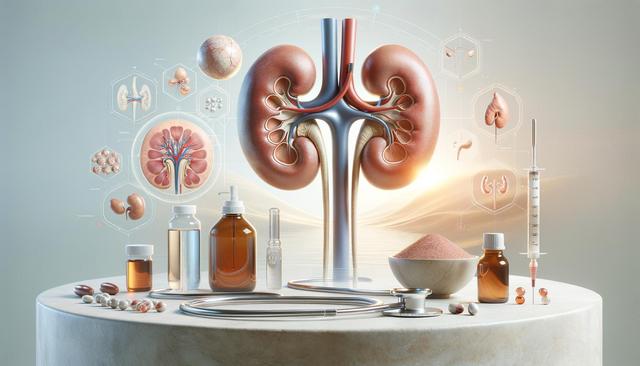Introduction to Urinary Incontinence Urinary incontinence is a common condition affecting millions of individuals worldwide, characterized by the involuntary leakage of urine.
It can range from a slight loss of urine when coughing or sneezing to complete inability to control urination.

Understanding Urinary Incontinence
Urinary incontinence is a condition that affects people of all ages, though it becomes more common with age. It is defined by the involuntary leakage of urine, which can occur during physical activities such as laughing, exercising, or even while at rest. This condition can significantly impact quality of life, leading to embarrassment, social isolation, and even depression. While some may experience occasional leaks, others may deal with persistent and severe symptoms. Understanding the underlying causes is essential to finding effective Urinary Incontinence Solutions.
There are several types of urinary incontinence, including:
- Stress Incontinence: Leakage occurs during physical movement or activity.
- Urge Incontinence: A sudden, intense urge to urinate followed by involuntary leakage.
- Overflow Incontinence: Inability to empty the bladder fully, leading to dribbling.
- Functional Incontinence: Physical or mental barriers prevent timely toileting.
Improving Bladder Control starts with identifying the type and cause of incontinence, which can involve a combination of lifestyle changes, medical treatment, and support.
Common Causes and Risk Factors
While urinary incontinence can affect anyone, certain factors increase the likelihood of developing the condition. These include age, gender, childbirth, and obesity. Women are more likely to experience stress incontinence, particularly after childbirth or menopause, while men may experience incontinence linked to prostate issues. Chronic conditions such as diabetes and neurological disorders also play a role.
Other contributing factors include:
- Smoking, which irritates the bladder and weakens pelvic muscles
- High caffeine or alcohol intake
- Certain medications, such as diuretics or sedatives
- Urinary tract infections or constipation
Understanding these risk factors is an important step toward finding Urinary Incontinence Solutions that are tailored to individual needs. Consulting a healthcare provider can help determine the specific cause and appropriate approach to Improving Bladder Control.
Diagnosis and Medical Evaluation
Proper diagnosis is crucial for determining the most effective Urinary Incontinence Treatment in Your City. A thorough medical history, physical examination, and sometimes diagnostic tests such as urinalysis, bladder diaries, or urodynamic testing are typically used. These assessments help identify the type of incontinence and any contributing health conditions.
Healthcare providers may also inquire about:
- Fluid intake habits
- Frequency and volume of urination
- Instances of leakage and possible triggers
In some cases, advanced imaging or neurological assessments may be required to rule out underlying conditions. Once a diagnosis is made, treatment options can be explored, ranging from behavioral therapies to medical or surgical interventions. For those seeking accessible Solutions in Your CityIncontinence, local clinics and specialists often provide customized care plans that align with personal health goals.
Treatment Options and Lifestyle Changes
There are a variety of Urinary Incontinence Solutions available, depending on the severity and type of incontinence. In many cases, non-invasive treatments such as pelvic floor exercises, bladder training, and dietary changes can be very effective. These methods aim to strengthen the muscles involved in urination and create healthier bladder habits.
Common treatment approaches include:
- Pelvic floor therapy: Exercises like Kegels to strengthen pelvic muscles
- Bladder training: Gradually increasing the time between urination
- Medications: To relax the bladder or improve bladder control
- Medical devices: Such as pessaries or urethral inserts
- Surgical options: Used in more severe or resistant cases
In addition to these interventions, adopting healthier habits such as reducing caffeine, managing fluid intake, maintaining a healthy weight, and quitting smoking can significantly contribute to Improving Bladder Control. For those searching for Urinary Incontinence Treatment in Your City, it’s worthwhile to explore local healthcare providers who specialize in this condition.
Support, Resources, and Emerging Technologies
Living with urinary incontinence can be challenging, but support and resources are readily available. Many communities offer support groups, educational seminars, and online forums where individuals can share experiences and learn from others. These platforms provide emotional support and practical advice for managing the condition.
Recent advancements in technology have also introduced innovative Urinary Incontinence Solutions. Wearable devices that monitor bladder activity, mobile apps for tracking symptoms, and telehealth consultations have made it easier to access care and stay informed. While the term Azure Atp Single Label Domain might typically relate to IT infrastructure, the evolution of digital health platforms shows how even complex systems can contribute indirectly to better health outcomes by improving healthcare data security and access.
For those seeking Solutions in Your CityIncontinence, many clinics now integrate modern technology with traditional treatment approaches to offer more comprehensive care. Staying informed and actively participating in one’s treatment plan can make a significant difference in long-term outcomes.
Conclusion: Taking the Next Step Toward Managing Incontinence
Urinary incontinence is a manageable condition, and with the right approach, many individuals can significantly improve their quality of life. Whether you’re just beginning to notice symptoms or have been managing them for some time, seeking professional guidance is important. With a wide range of Urinary Incontinence Solutions available—from lifestyle adjustments to medical treatments—tailored care is within reach.
Improving Bladder Control often begins with small but consistent changes. By understanding the causes, accessing local resources, and exploring Urinary Incontinence Treatment in Your City, individuals can take proactive steps toward better bladder health. Don’t hesitate to consult a healthcare provider and explore the Solutions in Your CityIncontinence that best fit your circumstances. Support is out there, and with time and effort, meaningful improvement is possible.